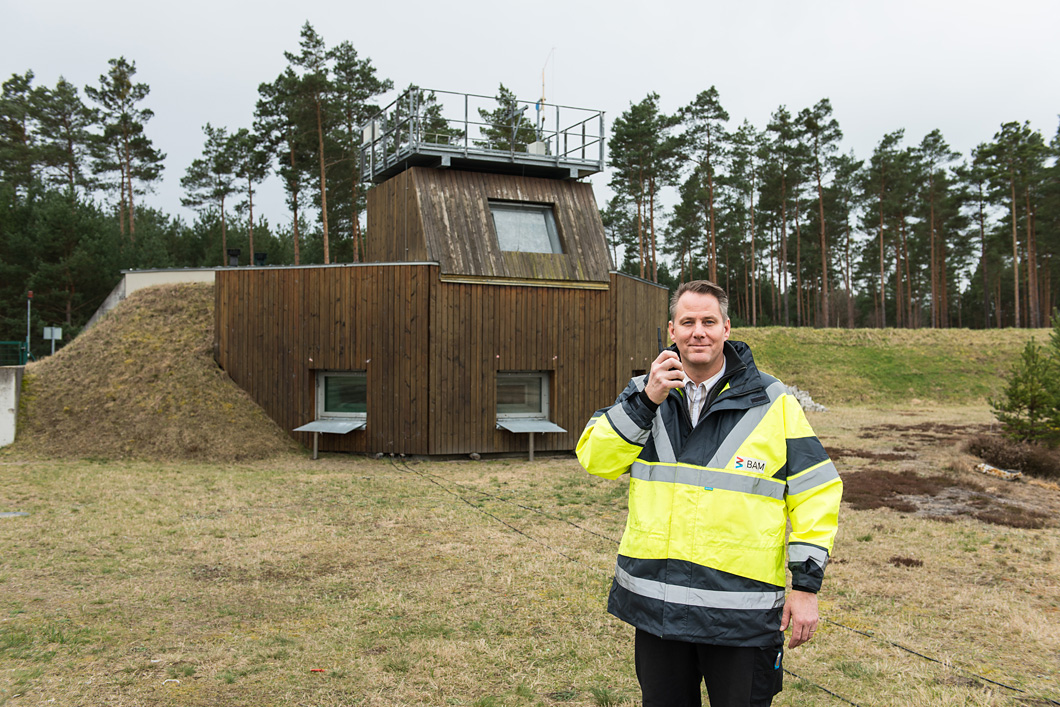
Dr. Kai Holtappesl in front of the observation bunker on the BAM Test Site at Horstwalde: he is in touch by mobile with colleagues who are preparing a steel container for a test series on the explosion stand.
Source: BAM, photo: Michael Danner
Dr. Kai Holtappels investigates gas explosions, very close to the action: he performs tests on the BAM Test Site at Horstwalde. Cooling systems and cash dispensers are, among other things, the focus of his interest, he says.
"Why is a 40-foot shipping container in the middle of a Brandenburg pine forest? The answer is simple, yet controversial: we are investigating its air conditioning – and whether it can produce an explosive internal atmosphere under certain circumstances, therefore, we had the steel container transported here to our large explosion stand. This is also why we need all the wiring on the doors; we are trying to simulate a gas explosion in the container. I watch the procedure from the protection of an observation bunker, my sensor technology measures all effects and go-pro cameras capture the scenario from all perspectives.
Does this mean that refrigerated containers are not really safe and this is why these effects must be tested? No. On the contrary, refrigerated containers are very safe. But we want to keep them that way and our tests are purely preventive experiments. It is a risk assessment before a special new cooling system for a shipping container is ever developed.
This is very typical of my work: I am researching how an explosion can be prevented at best, or at least the consequences kept very low so no one gets hurt. The background is that new coolants are urgently sought all over the world. Existing systems usually work with fluorinated refrigerants that are rather damaging to the environment. Environmentally friendly refrigerants are available, but they are flammable under certain conditions. My division and I are investigating whether and how they can still be used. If necessary, we can use the explosion stand, 400 metres in diameter, for experiments. In addition, we have our own open-air test facilities where we can explore gas leaks in pipes or tanks. They are partly replicas of entire systems from chemical installations and reactors.
We now have a team of sixteen here at Horstwalde. Another issue that has kept us busy in the recent past is cash dispensers. Criminals blow them up by pumping in and igniting welding gas. Together with the manufacturers of machines and protection systems we strive to analyse the damage and identify ways of better protection."


